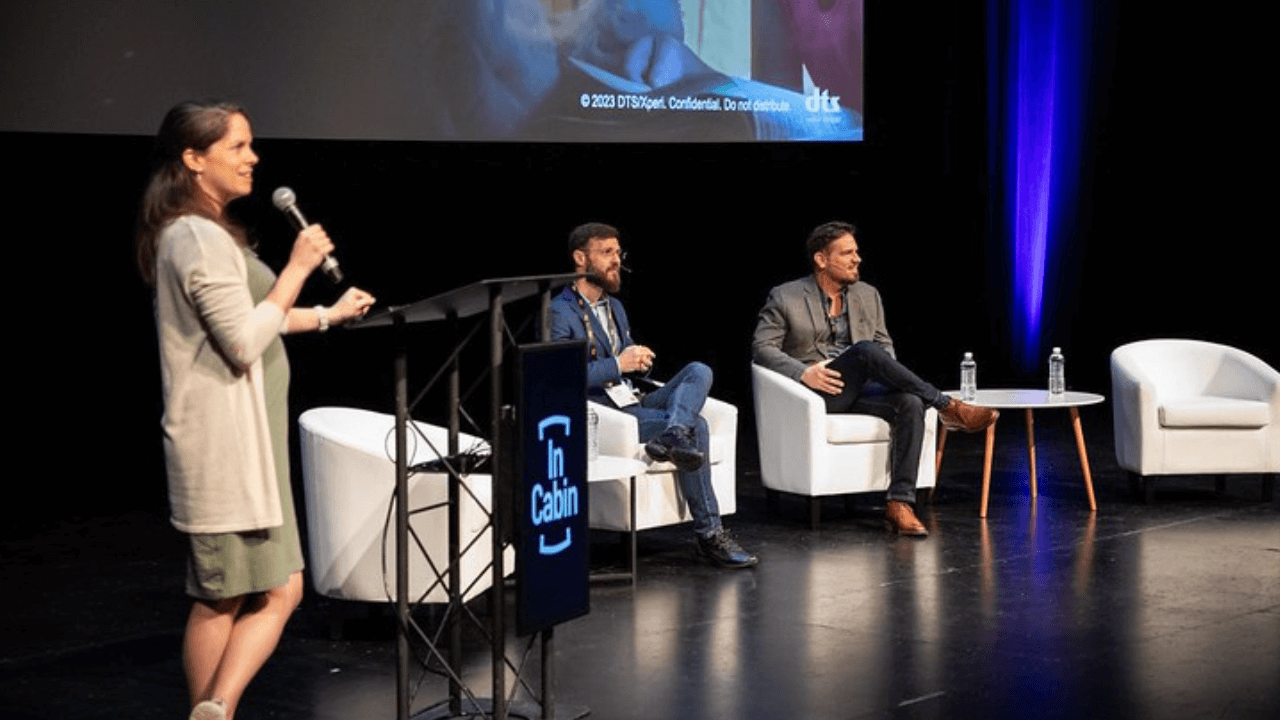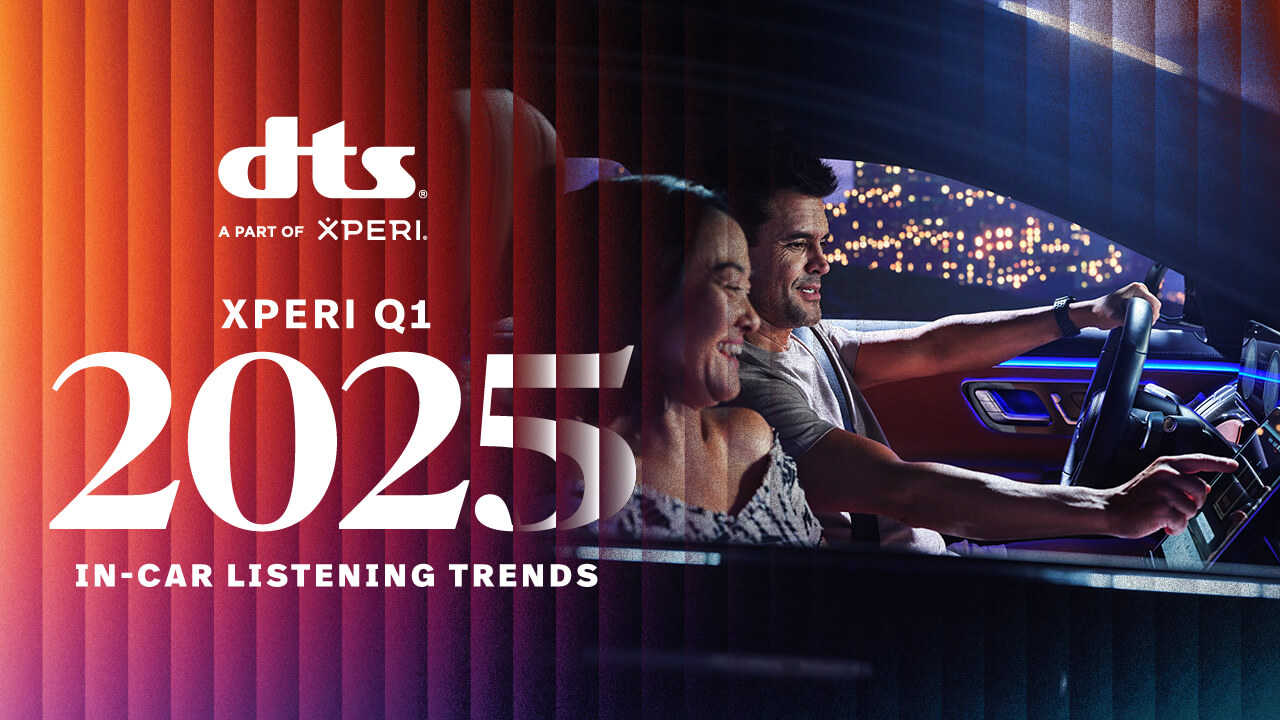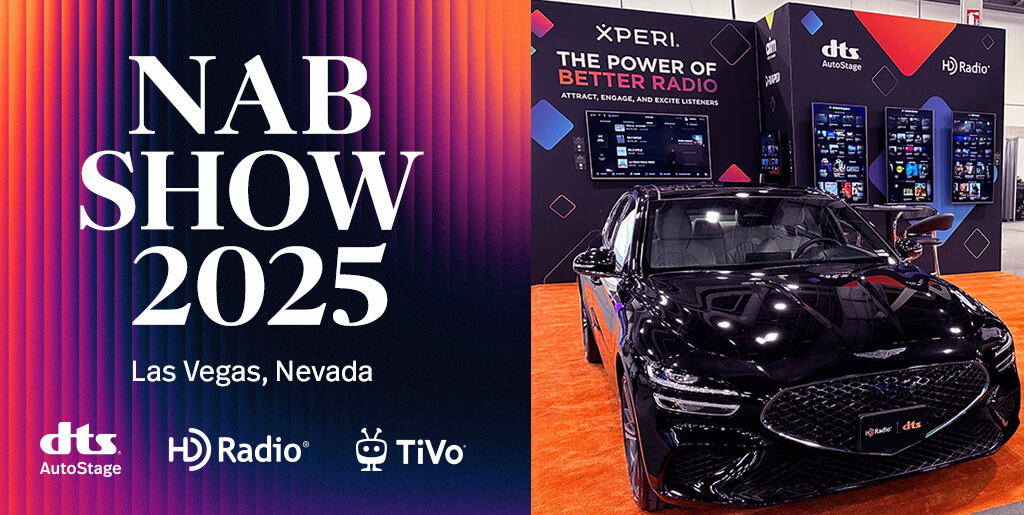In recent years, the DTS/Xperi in-cabin sensing team decided to take on the challenge of making the in-cabin experience as important for the industry as safety is. Embarking on this journey, we were aware of the challenges, as we were trying to disrupt almost two decades of solidified opinions on what truly matters in the in-cabin space.
In September 2022, DTS together with Sense Media announced the InCabin conference in Brussels, Belgium, the first-of-its-kind event targeting exclusively the in-cabin space. The goal of this event was to create a community surrounding the automotive in-cabin space and shift the focus from a safety narrative to one about experience.
Why building a community is important – InCabin Brussels.
InCabin is focused on creating more depth on in-cabin technologies, compared to typical automotive events which tend to have a broader agenda. Being under the same roof with over 300 professionals in the in-cabin space has a way of making you feel understood in your mission, while also hearing the vision and struggles of others. InCabin Brussels brought together car makers, system suppliers, technology makers, sensor and platform companies as well as media and industry analysts. It was also a great opportunity for start-ups, data and software companies to get in touch with key players in the in-cabin space. Using this opportunity, we explained in front of all the attendees the difference between safety and experience, and why the future focus should be on the in-cabin experience.
At InCabin Phoenix, we continued the discussion from Brussels by proposing a new way to look at the in-cabin space. We shifted the discussion from technical to conceptual.
To talk about in-cabin safety, we addressed it as a concept. It certainly goes beyond driver monitoring solutions (DMS), airbags, seatbelts or the highest New Car Assessment Program (NCAP) rating. The concept of safety is deeply ingrained in humans. It’s the prerequisite for everything else. From the very beginning of human civilization, safety has been a must. We need to feel safe before anything else. In automotive, in-cabin safety saves lives and is non-negotiable.
The first DMS was introduced by Toyota in 2006. Since then, the concept of DMS evolved. 17 years later these systems are trialed out, tested, and are mature enough to be regulated. The focus for technology makers, will be on optimization, integration, testing, and corner case improvement. So, the question is how the driver-centric solutions of the future will look a decade from now. We don’t think there will be much breakthrough though to be honest. We would rather see adoption, and this will happen via regulations. Most likely we will see a race to the bottom: who can do it cheaper and better.
What comes after safety and why should we focus on it?
While safety will always be a must for in-cabin, experience is a need that drives the buying decision. When a person feels safe, this allows them to relax and explore. This is how we become open to new experiences and end up searching for them. But, in the case of in-cabin experiences and safety, the reverse is true. Safety is implied. Experience is sought after.
There is a difference between how safety is perceived by the end user and by those that build the product or the service. When the average user goes to the car dealer, they will not ask about the gaze accuracy of the DMS system or the composition of the braking pads. Other traits will weigh heavier in the buying decision. There is an assumption that the vehicle is safe and meets standard regulation criteria. The typical driver will rather look for the bells and whistles that will make their driving experience more enjoyable. The car is the most expensive smart device we purchase, so we want to be pleasantly surprised and impressed. The user experience should look to fulfill their needs, take risks, and have bold decisions.
To sum up: experience is a need; if safety enables options, user experience drives decisions.
To define the in-cabin experience we need to look at the way we relate to our car and identify a way to reposition the vehicle in the mind of the users.
User experience will be at the center of tomorrow’s automotive in-cabin. With today’s best in-cabin innovations we can’t shake the feeling that the average user is somehow reluctant to fully embrace or adopt them. It’s like something is missing. We think the core problem is the way we relate to the car. The car is a symbol of freedom and financial independence. Despite custom seat covers, scented pine trees that hang from the mirror, or even interior tunning, the car’s interior somehow never managed to become more than the utilitarian place you need to be in to reach your destination. Your coffee shop, your salon, your local mall, and the cinema often rank higher on your list of preferred spaces than the car’s interior, even though you might spend the same amount of time inside the car to get to those places.
The vehicle as a third space.
At InCabin Phoenix we showed how the in-cabin space can become a third space. If a third place is outside of work and house, the third space is fully conceptual and is the first step in truly repositioning the in-cabin space in the mind of the users. A third space is about the process of learning, about culture and being alive, is about storytelling and digital universes.
We want to change the way the in-cabin space is perceived, shift the user perspective. We considered Maslow’s hierarchy of needs and mapped it to the car’s interior. We’ve already discussed experience being a need. We used the work of great thinkers to further build the foundation of the third space concept. The French philosopher Foucault looked at utopia and dystopia and came up with the concept of heterotopia as a place where everything is different. Using his work, we defined that we are looking at the intersection between perfect (utopia) and different (heterotopia). Lev Vygotsky showed us how social interaction as mediation in learning is the foundation for the third space. Homi Bhaba, through his third space theory, showed us the impact of culture in space, while Edward Soja highlighted what a “lived space” is. We used the work of Randal Packer to link the third space concept to the digital age we live in, and the work of Ray Oldenburg to explain that in-cabin space can also be a place, not only a space. Additionally, the history of the internet helped us explore digital universes and find a way to enable the first step toward the metaverse.
An augmented cabin for the connected cars — an evolving space that takes you places.
We defined what the in-cabin space is and when it becomes a third space. Is an omotopia (from the Greek omorfia, which means beauty). Is at the intersection between perfect and different, also at the intersection between the digital and real worlds. By leveraging sensing and audio processing technologies, we can define the next generation of human-machine interaction, a bi-directional learning process that will enable an ever-evolving in-cabin space.
This is an inside-out car. User and user experience come first.
If you weren’t aware, the slogan we choose for DTS AutoSense is, “There’s no place like my car.” Using our vision of an augmented cabin, we feel the term ‘place’ is interchangeable with ‘space’. Space refers to those moments when the car is on the move while place refers to the stationary moments (like when you are charging it).
Additionally, we introduced four in-cabin experience pillars:
- Productivity (or how to use efficiently the time spent in the car)
- Entertainment (social media, content consumption – video & audio, even gaming)
- Wellbeing (from body pose, expressions and why not in the future true emotions, to temperature and heart rate)
- HMI (ways in which the user can interact with the in-cabin space)
Imagination as a profession.
Greg Plageman, a Hollywood industry professional, joined us in Phoenix as a special guest. His latest series on Amazon Prime, “The Peripheral,” tackles the near future in an original way, rethinking cars, roads, core technologies but also VR/AR capabilities. He joined me on the stage to have the audience ask the question “What if?” and showed the overlap between the two industries. He helped the audience understand that first we need to imagine and then build it, be it the future, or in-cabin technology. He took us a step closer to a true connected car concept.
Our team is looking forward to InCabin Brussels coming up in June. We will do a deeper dive into the four experience pillars and conclude our one-year thought leadership challenge to move the industry’s focus from safety to experience.
Stay up to date on the latest technology and insights from DTS here.



